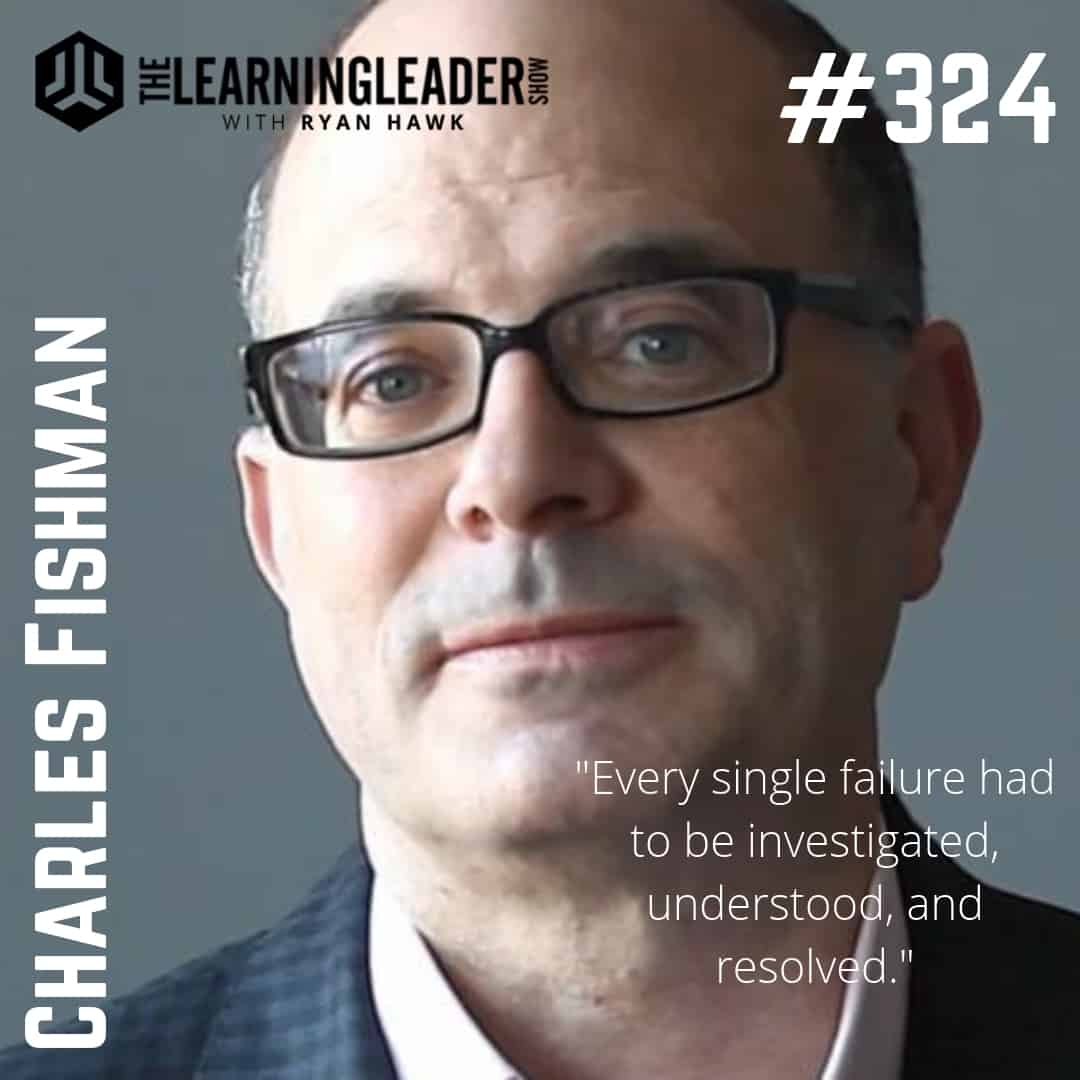Charles Fishman is the acclaimed author of One Giant Leap, A Curious Mind (with Brian Grazer), The Wal-Mart Effect, and The Big Thirst. He is a three-time winner of the Gerald Loeb Award, the most prestigious prize in business journalism. He started reporting on the U.S. space program as a Washington Post reporter covering the space shuttle Challenger disaster, and has written about space for The Atlantic, Smithsonian, and Fast Company. As part of the reporting for One Giant Leap, he flew in zero gravity.
Be part of “Mindful Monday” — Text LEARNERS to 44222
Subscribe on iTunes or Stitcher Radio
The Learning Leader Show
“Every single failure had to be investigated, understood, and resolved.”
Show Notes:
- Leaders who sustain excellence =
- They insist on excellence. “The work needs to be as good as it can be.”
- Getting to the moon was the largest project in the history of civilization
- Clarity of the mission – Everyone must know the goal
- Must keep people motivated
- Standards must be clear – And the reasoning behind each action (intentional)
- President Kennedy was frustrated with how the U.S. was doing versus the Russians in space. He needed to make a bold statement. When it was made, the administration felt there was a 50/50 shot that it could happen.
- It was important to announce broad goal and the reason behind it
- “Take the stairs” – Think of it as a blessing. “I get to do this.”
- Not because it is easy, but because it is hard.
- “A master stroke of leadership because it was a stretch goal, but it wasn’t insanity.” It must be balanced.
- There are tapes of JFK talking scientific discovery where it was obvious he had little understanding of it. –> It’s important to have people you have confidence in leading areas where you’re lacking knowledge.
- “If JFK wasn’t assassinated, we may not have gone to the moon. He was starting to get cold feet about the cost.”
- The space program created a culture of learning from failure:
- “Every single failure had to be investigated, understood, and resolved.”
- “No Random Failures” was the motto.
- “Every failure is a gift.” — There were 14,000 recorded failures in testing.
- Collaboration — How to keep so many people aligned? There were 400,000 people from 20,000 companies working on the Apollo missions!
- NASA’s management style:
- Clearly defined roles – What are your solutions to the problems?
- Gave assignments and qualities that needed to be met
- NASA’s management style:
- NASA had a culture where they brought everyone together for in person meetings. “Every minute of a mission would be walked through.”
- There was transparency and decisions got made.
- Get people together in person and do something important. This built camaraderie among the dispirit teams.
- Bill Tindall — A mission planning genius on space navigation. He was also gracious, self-effacing, and had a great sense of humor.
- Bill respected what others had done, had respect for the mission. He had the confidence to be calm. A different person who used a different manner would have been a disaster working with the leaders at MIT.
- People have to be persuaded to follow you.
- Both Gene Kranz and Bill Tindall were unafraid to hear input. They were confident enough to find the right answer (wherever it came from).
- We are entering the most exciting time in space travel (Elon Musk, Jeff Bezos)
- Use the “Get To Know You Document“
- Why joining The Learning Leader Circle is a good idea
“Every minute of a mission would be walked through.”
More Resources:
- Read: One Giant Leap
- Follow Charles on Twitter: @cfishman
- Be part of “Mindful Monday” — Text LEARNERS to 44222
- Connect with me on LinkedIn
- Join our Facebook Group: The Learning Leader Community
- To Follow Me on Twitter: @RyanHawk12
More Learning:
Episode 078: Kat Cole – From Hooters Waitress To President of Cinnabon
Episode 216: Jim Collins — How To Go From Good To Great
Episode #300: AJ & Keith Hawk – How To Instill Work Ethic & Curiosity In Your Children
Episode #303: General Stanley McChrystal – The New Definition Of Leadership


[…] You can listen to the full conversation, here. […]